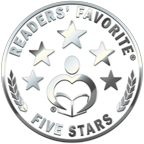Many posts ago, I wrote about early alchemists’ seven principal metals. Since then we’ve talked about mercury and tin, but we haven’t discussed the oldest metal of them all (according to ancient alchemical thought): lead.
Though it might not technically count as the “oldest metal” any more, lead has been known for a very long time. It’s mentioned in the Bible, and the Babylonians used it. The Romans made dining utensils and water pipes with it (oops!). Ancient alchemists associated lead with Saturn and, naturally, attempted to make gold of it. Lack of golden hue aside, lead is special because it’s very stable, heavy, and malleable at the same time. It’s easy to work with — the only downside is, it’s toxic.
Like mercury, lead can build up in the body over time. Any amount of it can be dangerous, and eventually it will cause death. Lead poisoning was actually recognized during Augustus Caesar’s time. But that didn’t stop its use in everything from pipes to paint! It was only in the 1970s that the US government started regulating and diminishing the use of lead in common products.
Today, lead is still useful: it’s in some batteries, x-ray shielding, and more. But perhaps it’s more common in our everyday speech! “Leaden,” “like a lead balloon,” pencil “lead” (actually graphite). Even “plumbing” and expressions like “plumbing the depths” can be traced back to lead — “plumbum” was the Roman word for the element, and later a “plumb” was a leaden weight used to measure the depth of a body of water. Fortunately, these uses of “lead” are completely safe for continued use. 🙂
Resources
Dingle, Adrian, and Dan Green. The Complete Periodic Table. Basher Science, Kingfisher New York: 2007.
“Lead.” National Institute of Environmental Health Sciences. Find it here.
“Lead: chemical element.” Encyclopaedia Britannica. Find the page here.
“Lead: Compound Summary.” PubChem, National Library of Medicine. Find the page here.
O., Catherine. “What is Pencil Lead Really Made of?” National Pen, pens.com. Find the article here.





